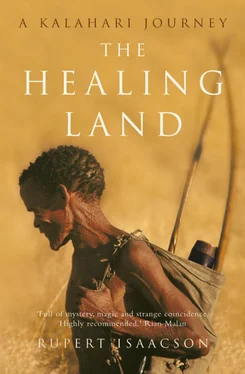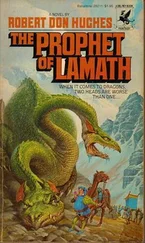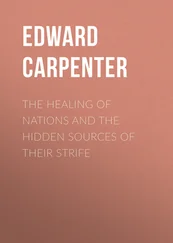It was a long walk, and hot. The hunters stopped often to ease their shoulders from the weight and their faces from the flies that buzzed incessantly around the bloody loads. Tom and I offered tobacco and water around until both ran out. At the next stop Fanzi, pointing to a small, leafless twig poking up from the cracked earth, began hacking at the soil with his digging stick. A minute later he had unearthed a large, round tuber which, when cut, revealed white flesh dripping with water.
As we sat there, eating the succulent tuber, letting the moisture drip down our throats, there came a sharp, shrill cry from above. We looked up: two eagles were chasing a white goshawk out of their section of sky. Lighter and more agile, the goshawk spiralled up and out of reach into the dazzling blue, the heavier eagles flapping below in slow but unrelenting pursuit. We watched, silent, until all three had dwindled to mere dots, their fading, high-pitched cries floating down to where we sat on the dry earth. Bo, hefting his heavy, fly-blown load once more, creaked to his feet, and caught my eye. He smiled – his mouth turned down ironically at the corners – and pointed to himself, ‘ Boesman ,’ he said in Afrikaans, and shook his head, laughing.
That night, and the two that followed, the village feasted but still there was plenty of meat left over. The hunters, having provided food for the month, rested. We spent the remaining days playing with the children who turned up shyly each morning beneath our tree, or going out with the women to forage for wild foods. They showed us how well-stocked the Kalahari is with edibles, even in the parched dry season, leading us through the seemingly barren bush, and stooping every few minutes to pluck, dig, pick up foods until their skin aprons and ragged cotton skirts were filled with sweet moretlwa berries, tart, lemony baobab fruit, wild onions, tubers that looked like sweet potatoes, even nuts encased in dried piles of last year’s elephant dung. Sometimes they would make Tom and I climb on each other’s shoulders to pick caramel-tasting acacia gum from where it had bubbled out and dried between the forked branches of the thorn trees.
Back home, I published a piece on the trip in the Daily Telegraph , but the anticipated reaction did not come. No tourists rang up, anxious to book their own Bushman adventure. In fact, over the course of that year, 1996, things became decidedly worse for Bushmen right across the Kalahari. The Herero cattle herders trickled steadily into Nyae Nyae unopposed, slowly dispossessing the Ju’/Hoansi as they came. In Botswana, the government began a campaign of forcibly removing Bushmen from the vast Central Kalahari Game Reserve – an area the size of Switzerland that had been set aside specifically for the Bushmen in the early 1960s – and herding them into permanent settlements outside the reserve’s borders. Meanwhile, in central northern Namibia, the Hai//om Bushmen, who had been ejected from the vast Etosha National Park back in the 1970s, became so desperate at their landless state that they staged a demonstration outside the gates of the national park and were tear-gassed and put in jail.
A fledgling Bushman political organisation – called, aptly enough, First People of the Kalahari – emerged in Botswana and began attracting some press attention that year. But after a brief flare of publicity, the leader, John Hardbattle (the mixed-race son of a Nharo Bushman woman and an English rancher), died suddenly from stomach cancer, leaving the organisation leaderless and floundering. I had, it seemed, satisfied my childhood desire to meet and hunt with the Bushmen of my mother’s stories just as they were about to cease to exist.
That year I moved to the USA. While there I stumbled across a recent National Geographic which had a picture of two leopards on the cover and the title ‘A Place for Parks in the New South Africa’. Inside was a picture that stopped me in my tracks. It showed two Bushmen kneeling in the red sand beside the recumbent body of their father, an ancient man, toothless and obviously dying. According to the caption this was Regopstaan, patriarch of South Africa’s Xhomani Bushmen, the last remaining clan of traditionally living Bushmen left in the whole country. This clan, the caption explained, had lodged a land claim with the South African government, both for access to their old hunting grounds in that country’s Kalahari Gemsbok National Park, and to receive compensatory ground to live on outside the park fence.
I recalled how, three years before, I had driven to the Kalahari Gemsbok National Park, hoping to find Bushmen, and had been told by the park staff that no Bushmen had existed in the region for decades. Now, looking at this picture in the National Geographic , I realised I had been misled. Not only had there been Bushmen in the region, but they had been ejected from the very park whose staff had denied their existence to me. Moreover, concluded the photograph’s caption, the park’s authorities were resisting the Bushman land claim. I rang the magazine’s editorial offices, and was put in touch with Roger Chennels, the South African human rights lawyer who had taken on the case. And he in his turn put me in touch with a woman called Cait Andrew in Cape Town who was the person who had first alerted him to the Xhomani cause. She confirmed that the staff at the park had indeed misled me. Bushmen had always lived in the area. In fact the official literature that accompanied the park’s declaration, back in the 1930s, had stated that its main aim was to protect the Bushman way of life as well as the game on which they relied – in fact classifying the Bushmen as game to be protected along with the rest of the wildlife. But that, she said, had changed with apartheid, which had reclassified the Bushmen as human (but the wrong kind of human) and had evicted them from the park in the 1970s. Under apartheid national parks were for whites only.
So the Xhomani had been surviving in the dunes outside the fence ever since, living in a state of near beggary, suffering every form of abuse, and falling victim to the inevitable by-products of despair, alcoholism and violence, as well as an almost complete breakdown of their culture. No longer able to forage at will, they lived by making crafts for tourists whose cars they waved down as they drove along the road to the park. Half the clan had gone to live in a private game reserve far to the south, where they existed as inmates in a human zoo, posing in their skins for tourists’ cameras. They had even lost their language and only a few of the older generation were still able to remember the Xhomani tongue. The rest spoke mostly in Nama or Afrikaans, the language of those who had dispossessed them.
Under Mandela’s New South Africa, the clan had at last come above ground, and had been persuaded to file this new land claim. For the first time, they were being taken seriously by a government. Old ‘Madiba’ (the popular name for Mandela) had even invited Dawid Kruiper, the leader of the Xhomani since old Regopstaan had died, to present his case personally over tea at the presidential residence in Cape Town. Theoretically, there was every chance that they might win. But there was stiff opposition from the old order, in the person of the park’s chief warden and the National Parks Board as a whole (which was, Cait Andrew confided, still an enclave of entrenched Afrikanerdom). On top of this, the Xhomani land claim was being opposed from another quarter, entirely unconnected with the national park. A group of local coloured farmers, known as the Mier, were claiming that, back in the 1960s, a large tract of their traditional land had been appropriated by the Kalahari Gemsbok National Park. If the Xhomani had a land claim, they said, then so had they. To complicate matters further, it seemed that much of the land which the lawyers said should be given to the Xhomani in compensation for what they had lost to the park, actually belonged to these Mier farmers, and stood to be forcibly purchased from them should the Bushmen win the claim. Land is everything in South Africa: the thought of giving up land to Bushmen, even with due compensation, was, said Cait, pure anathema to the Mier. They had resolved to fight the Xhomani land claim to the last.
Читать дальше












